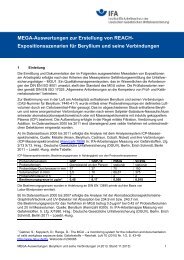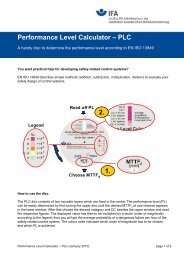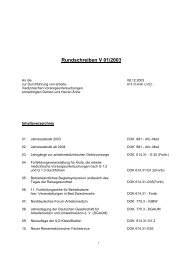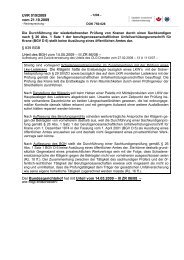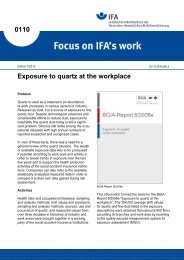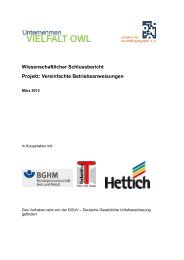Effectiveness of measures to prevent needlestick injuries among ...
Effectiveness of measures to prevent needlestick injuries among ...
Effectiveness of measures to prevent needlestick injuries among ...
You also want an ePaper? Increase the reach of your titles
YUMPU automatically turns print PDFs into web optimized ePapers that Google loves.
4 Intervention program evaluation<br />
4.3 Summary<br />
We obtained 278 unique papers for individual, preliminary review <strong>to</strong> identify evalua-<br />
tion studies. Several additional articles were added from the bibliographies <strong>of</strong> key<br />
review papers, and from the updated PubMed search. Sixty-one papers were ultimately<br />
included in this review.<br />
The majority <strong>of</strong> intervention programs were implemented in the United States, a not<br />
unexpected result bearing in mind the his<strong>to</strong>ry <strong>of</strong> the NSI discussion and political devel-<br />
opment.<br />
Overall, the literature regarding interventions <strong>to</strong> reduce the incidence <strong>of</strong> NSI <strong>among</strong><br />
health care workers may be considered <strong>to</strong> be <strong>of</strong> intermediate quality. Each category<br />
<strong>of</strong> replacement equipment discussed included a small number <strong>of</strong> reasonably well-<br />
planned and executed evaluations that adequately controlled for potential biases.<br />
The majority <strong>of</strong> papers reviewed, however, had one or more methodological flaws<br />
that precluded any firm conclusion regarding intervention effectiveness.<br />
Among the fourteen papers describing replacements for traditional hollow-bore nee-<br />
dles, the data generally favored protection against NSI by the new safety-engineered<br />
equipment. The twenty-five papers evaluating replacements for other sharp devices<br />
were less well-done, and showed some inconsistent results. However, especially in the<br />
case <strong>of</strong> needleless IV systems, where the majority <strong>of</strong> the studies have been rated <strong>of</strong> low<br />
quality, these systems seem <strong>to</strong> be able <strong>to</strong> reduce NSI <strong>to</strong> a large extent. Introduction <strong>of</strong><br />
assistive devices, new types <strong>of</strong> or locations for needle disposal boxes and double<br />
gloving pro<strong>to</strong>cols appeared <strong>to</strong> be generally protective against NSI, but the majority <strong>of</strong><br />
the programs evaluating these types <strong>of</strong> interventions were <strong>to</strong>o methodologically flawed<br />
<strong>to</strong> allow for firm conclusions <strong>to</strong> be drawn.<br />
The programs that focused on safety training resulted, at least, in improved complete-<br />
ness <strong>of</strong> NSI reporting. Reductions in NSI could not be definitively linked <strong>to</strong> training,<br />
however, in part due <strong>to</strong> inability <strong>to</strong> control for biases due <strong>to</strong> study design and in part<br />
due <strong>to</strong> concurrent introduction <strong>of</strong> other intervention programs. Some might suggest<br />
that combination programs, especially those incorporating overall safety training with<br />
use <strong>of</strong> safety equipment, are more effective than interventions that focus on only one<br />
Report „Needlestick <strong>injuries</strong>“ 56





